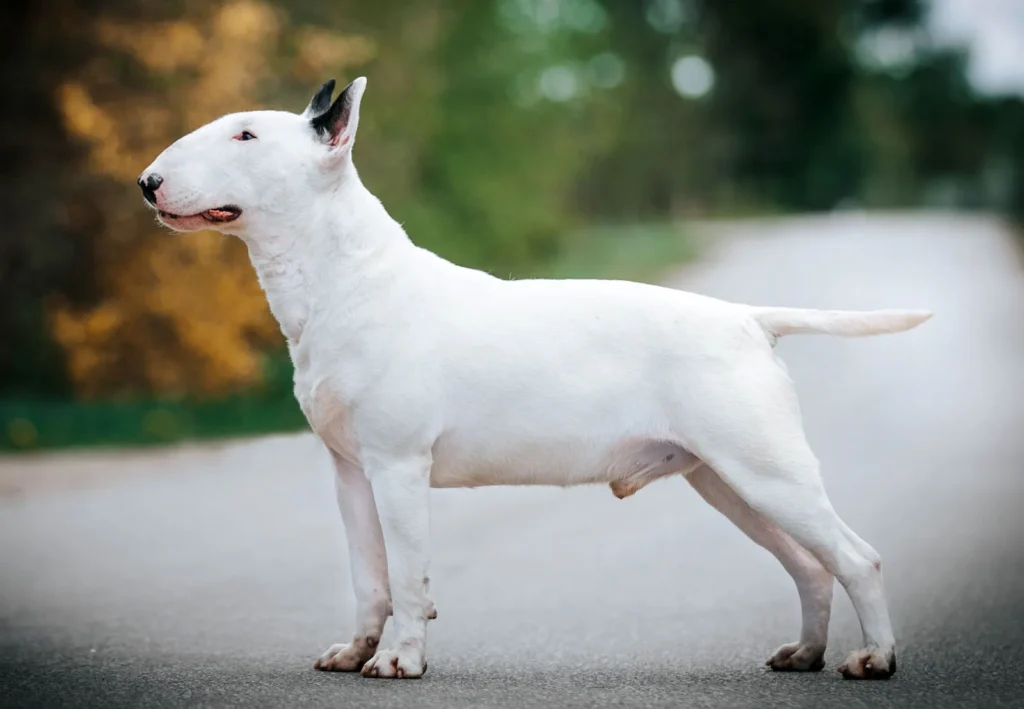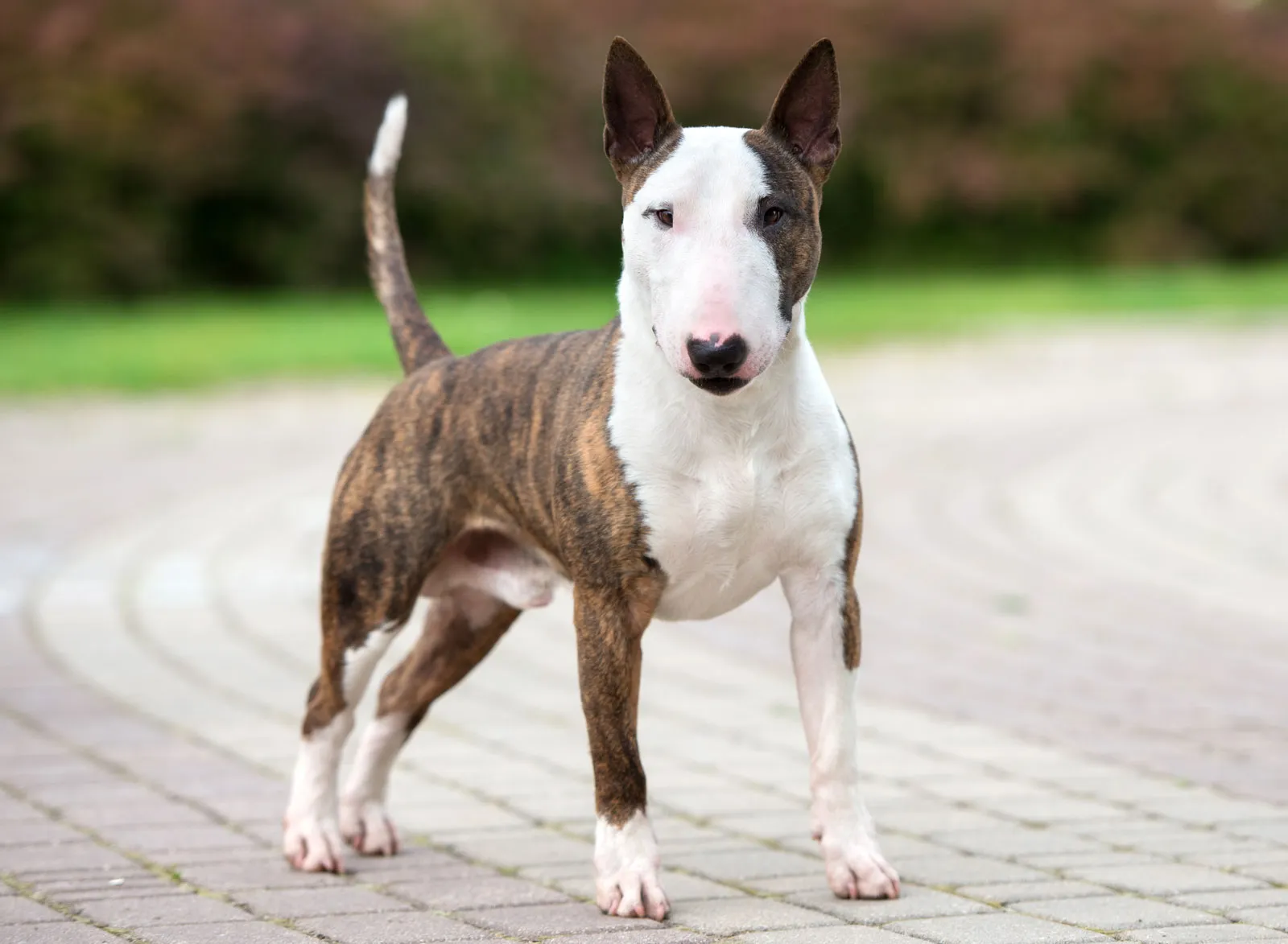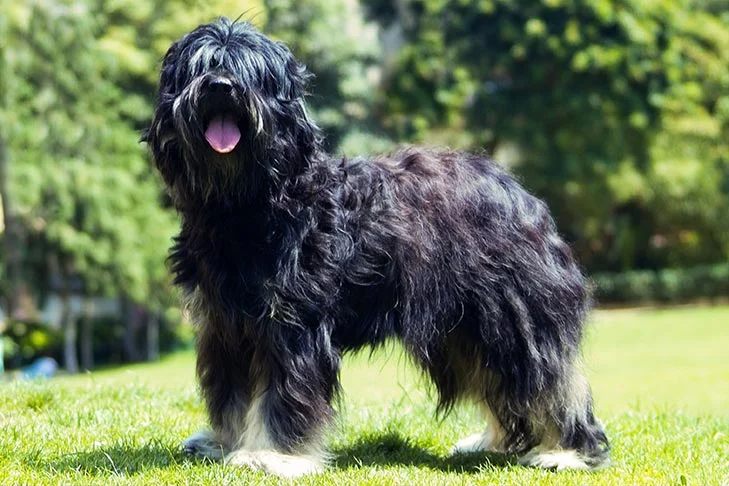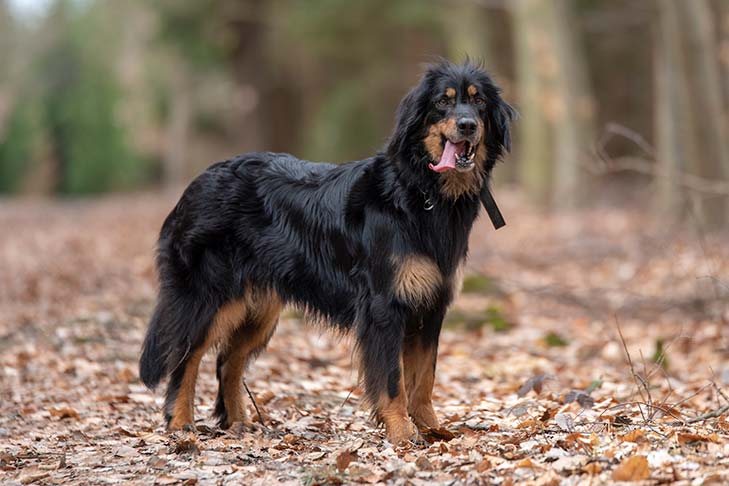Introduction
The Bull Terrier is a unique and distinctive dog breed that was originally bred for bull-baiting and dog fighting. Today, however, they are known for their playful and affectionate personalities, making them a popular choice for families and individuals alike. These dogs have a muscular and athletic build, with a distinctive egg-shaped head that is unlike any other breed. They come in a variety of colors, including white, black, brindle, and tan. While they can be strong-willed and stubborn at times, Bull Terriers are highly intelligent and can be easily trained with patience and consistency. Overall, the Bull Terrier is a loyal and loving companion that can bring joy and excitement to any household.
Bull Terrier Temperament

Bull Terriers possess a unique physical appearance with muscular bodies and egg-shaped heads, but they also have distinctive personality traits. These include being playful, affectionate, and protective towards their owners, as well as stubborn and independent thinkers. Daily exercise and training with patience and consistency are necessary for Bull Terriers to thrive. Despite their independent nature, they form strong bonds with their owners and make excellent watchdogs. Prospective owners should be prepared to provide sufficient socialization and exercise for these loyal companions.
Aggression
While the Bull Terrier is generally a friendly and affectionate breed, like all dogs, they are capable of displaying aggressive behavior under certain circumstances. Aggression in Bull Terriers can be caused by a variety of factors, including poor socialization, fear, anxiety, territoriality, and genetics. It’s important to note that aggression in any dog breed is not always related to their breed but rather to individual circumstances and behavior. Signs of aggressive behavior in Bull Terriers may include growling, snarling, snapping, biting, and lunging. It’s crucial to address any aggressive behavior early on through positive reinforcement training and socialization.
Health and Lifespan of Bull Terrier

The Bull Terrier is a relatively healthy and long-lived breed of dog. On average, a Bull Terrier can live between 10 to 14 years. However, with proper nutrition, exercise, and veterinary care, some Bull Terriers have been known to live up to 15 years or more. Like all breeds, there are some health issues that Bull Terriers may be prone to, such as deafness, heart disease, kidney disease, and skin allergies
Food
As a Bull Terrier owner, you want to ensure that your furry friend is getting the best possible nutrition for their overall health and wellbeing. The best food for Bull Terriers is a high-quality dog food that is formulated specifically for their breed and life stage. Look for dog food that lists real meat as the first ingredient, and avoid brands that include fillers, artificial preservatives, and by-products. Bull Terriers have a tendency to gain weight, so it’s important to monitor their calorie intake and choose a food that is appropriate for their activity level.
Training for Bull Terrier
When training a Bull Terrier, use patience, consistency, and positive reinforcement. Start with basic obedience commands like “sit,” “stay,” “come,” and “down,” and reward good behavior with treats or praise. Early socialization is crucial, so introduce your Bull Terrier to various people, animals, and environments. Provide plenty of exercise and playtime, and use a crate for house training and a safe space.
Conclusion
In conclusion, Bull Terriers are a unique and beloved breed known for their distinctive physical appearance and playful, affectionate personalities. While they can be stubborn and independent thinkers, they are also loyal and protective of their families. Training a Bull Terrier requires patience, consistency, and positive reinforcement, but with proper socialization, exercise, and training, they can become well-adjusted and well-behaved companions. Prospective owners should be prepared to provide plenty of love and attention to these special dogs.



